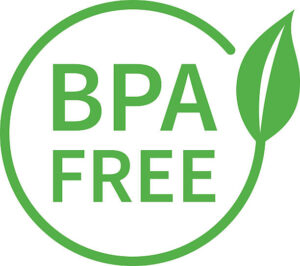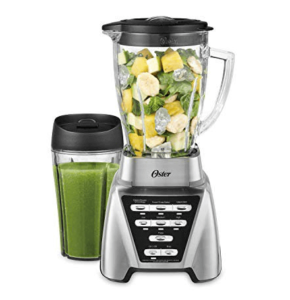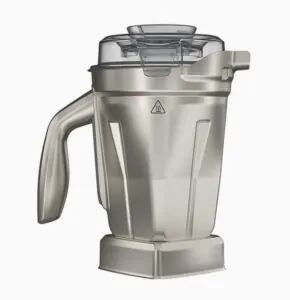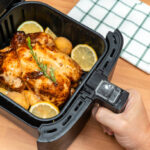Plastic vs. Glass vs. Stainless Steel Blender Jar: Most manufacturers use polycarbonate material to produce blender containers due to their unique properties and benefits. However, the safety of these containers and their potential impact on human health is a genuine concern with many eco supporters and enthusiasts.
In this article, we will explore the reasons behind the popularity of polycarbonate containers for blenders, discuss the potential concerns associated with their use, and look at alternative options such as glass and stainless steel blender’ containers.
Read More: 6 Best Blenders with Glass Jar | Plastic-Free Alternative to a Typical Blender
Table of Contents
Why are Polycarbonate Containers Commonly Used for Blenders?
Polycarbonate is the most popular material used for blender containers, and there is a reason behind it; the most obvious is its many advantages. Here are the most important of them:
Pros:
- Power: They can withstand shattering and cracking and can be used in high-power blenders.
- Durability: Polycarbonate containers are known for their durability and resistance to breakage.
- Lightweight: Polycarbonate containers are lighter than glass containers, making them easier to handle and maneuver during blending.
- Shatterproof: Unlike glass containers, polycarbonate containers are shatterproof, reducing the risk of injury if the container is accidentally dropped.
- Cost-effective: Polycarbonate containers are generally less expensive than glass containers, making them an attractive option for manufacturers and consumers alike.
- Clarity: Polycarbonate containers offer good clarity, allowing users to see the blending process and easily monitor the consistency of their mixtures.
Cons:
- Harmful Chemical Leaching: Studies have found that certain chemicals in polycarbonate can leach out of the plastic and into the food and beverages it contacts.
Concerns About Polycarbonate Containers
Despite the advantages of polycarbonate containers, there are growing concerns about their safety and potential impact on human health. Studies have found that certain chemicals, including BPA in plastic, can leach out of the plastic and into the food and beverages we consume, and some of these chemicals have been linked to health problems.
Manufacturers are now addressing consumer concerns about BPA by moving towards using BPA-free polycarbonate. However, research has shown that many of them still leach BPA into food and drinks. Additionally, it is crucial to avoid putting plastic containers in the microwave or dishwasher because the heat may break them down over time and release trace amounts of chemicals into the food and drinks.
What is BPA?

BPA (Bisphenol A) is a synthetic estrogen found in polycarbonate plastic and epoxy coatings of food cans to prevent the contents from corroding the metal.
Although the U.S. Food and Drug Administration states that BPA in food is safe at the current levels of exposure in humans, BPA is unsafe for human health; it can act as a hormone in the body and cause many health problems connected with human growth hormone (HGH) and reproduction system. It also may have effects on the brain and prostate gland of fetuses, infants, and children. Additional research suggests a possible link between BPA and increased blood pressure, type 2 diabetes, cardiovascular disease, and metabolic disorders (including obesity).
What is Eastman Tritan Copolyester, and why it may be unsafe?
Eastman Tritan Copolyester is a type of thermoplastic resin often used to manufacture containers for premium blenders. It is shatterproof, clear as glass, durable, resistant to adore, and can withstand the high loads of premium blenders; this makes Tritan Copolyester an attractive alternative to traditional plastics like polycarbonate.
The company claimed that it does not contain BPA, BPS (Bisphenol S), or any other bisphenol compounds commonly associated with health concerns, as it is based on cyclohexanedimethanol and a derivative of cyclobutanediol.
However, some studies have shown that chemicals with estrogenic activity (EA) can be released from Tritan resins, especially when stressed or exposed to sunlight. Moreover, plastics generally release small amounts of chemicals into their contents, particularly when exposed to high temperatures.
Glass Containers

Glass blender containers have their own set of advantages and disadvantages compared to plastic blender containers. Here are some pros and cons of using glass blender containers:
Pros:
- No chemical leaching: Unlike some types of plastic, glass does not leach any chemicals into your food or beverages.
- Durability: Glass blender containers do not discolor, scratch, or absorb food odors like plastic containers. With proper care, a glass container can last longer than a plastic one.
- Clarity: Glass containers retain their clarity over time, while plastic containers can become scratched and lose their transparency
- Temperature resistance: Glass containers can withstand higher temperatures than plastic ones, making them suitable for hot ingredients and providing better sterilization during cleaning
Cons:
- Power: Glass blender containers are not as powerful as plastic containers, and they may not be able to handle high-speed blending.
- Weight: Glass blender containers are much heavier than their plastic counterparts, which can be a consideration for those with arthritic or problem hands and the elderly.
- Breakage: Glass containers are more prone to breakage if dropped, making them less durable than plastic containers.
- Cost: Glass blender containers are typically more expensive than plastic ones.
While glass blender containers offer benefits such as durability, clarity, and temperature resistance, they may not be as powerful as plastic containers. They thus could be used only for a limited set of blending tasks.
Metal Containers

Pros:
- Power: Can be exposed to high loads and suited for high-power blenders.
- Durability: Metal blender containers are highly durable and can withstand heavy use and frequent blending without the risk of breakage.
- Temperature resistance: Like glass containers, metal blender containers can handle hot ingredients without warping or melting.
- No chemical leaching: Like glass, metal containers do not leach any chemicals into your food or beverages.
- Easy to clean: Metal blender containers are generally easy to clean and are often dishwasher-safe.
Cons:
- Weight: Metal blender containers can be heavy, which may make them less suitable for those with arthritic or problem hands, as well as for the elderly.
- Cost: Metal blender containers are typically more expensive than their plastic counterparts.
- Lack of visibility: Unlike glass containers, metal containers do not allow you to see the blending process, which may be a drawback for some users.
- Noise: Metal blender containers can produce more noise during blending compared to plastic or glass containers.
Final Thoughts
When it comes to blender containers, there are several options available, each with its own set of advantages and disadvantages.
Plastic Blender Containers are strong and can withstand high loads of high-end powerful blenders; lightweight, less expensive, and more easily replaceable. However, they may become discolored, may contain BPA, and can leach chemicals into food.
Glass Blender Containers are durable, temperature-resistant, and do not leach chemicals into food, but can be used only in low-powered blenders. In addition, they are heavy and more expensive.
Metal Blender Containers are durable, temperature-resistant, easy to clean, and can be used for powerful blenders. While they are heavy, more expensive, lack visibility, and can produce more noise during blending.
The choice of blender containers comes down to personal preference and specific needs. Plastic containers are a good option for those on a budget, while glass and metal containers offer outstanding durability and temperature resistance.
Recommended reading:



